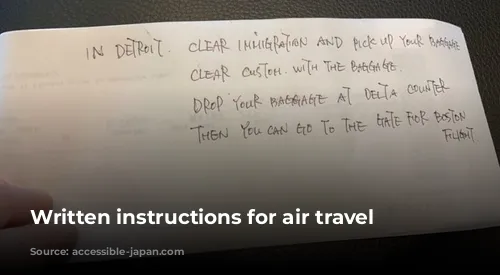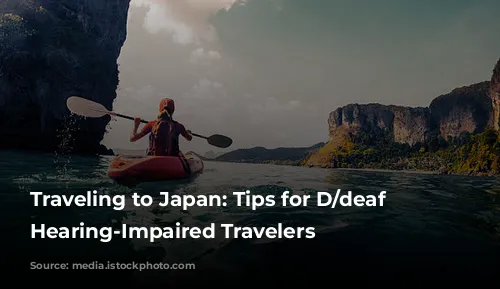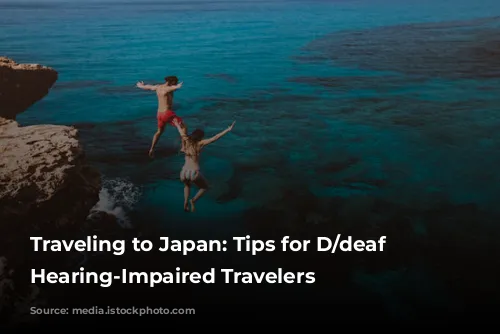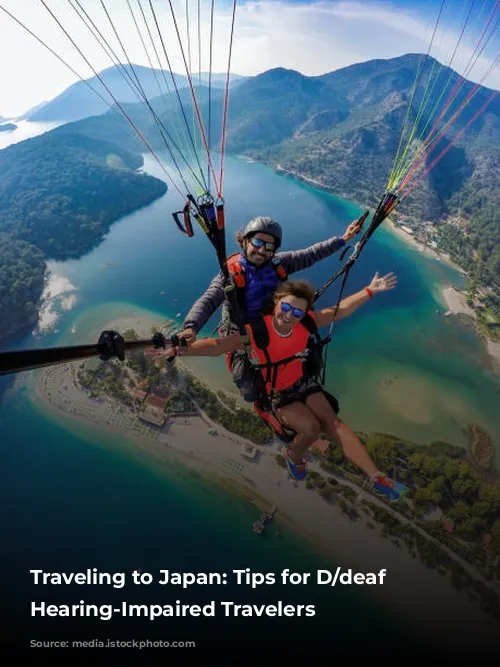Traveling to Japan can be an exciting adventure, but it can also present unique challenges for D/deaf and hearing-impaired individuals. Garbled announcements, unclear information on screens, and noisy crowds can make navigating airports and transportation systems difficult. This article shares tips from a hearing-impaired traveler, offering insights based on personal experiences and aiming to make your journey smoother.
The author, who experiences hearing loss in one ear and moderate loss in the other, provides a unique perspective on traveling as someone who navigates between the hearing and Deaf worlds. The tips focus on traveling to and from the United States, but many are applicable to international travel in general.

Before You Go: Planning for a Smooth Trip
Proactive planning can significantly reduce stress and confusion during your journey. Here are a few essential steps to take before your trip:
-
Sign up for TSA Precheck (or a similar program): If you’re eligible and have the time, TSA Precheck can be a game-changer for airport security. This allows you to skip long lines, keep your shoes on, and leave electronics in your bag. You’ll be able to identify yourself with your precheck-marked boarding pass, making communication quick and efficient.
-
Communicate your needs when booking tickets: Indicate any assistance you require, such as written instructions, when purchasing your tickets. Being upfront about your needs allows airlines to prepare and accommodate you. While outcomes might vary, it can help avoid surprises and ensure a smoother experience.
-
Understand airline and baggage policies: Familiarizing yourself with airline policies and procedures can save you time and stress. Knowing what to expect can help you avoid relying solely on verbal instructions, which can be challenging in a noisy environment.
-
Use every communication tool available: Don’t hesitate to ask employees for written instructions, particularly in unexpected situations. For Japan travel, consider carrying a sheet with Japanese phrases and their English equivalents to facilitate communication. Even Google Translate can be helpful for basic interactions.

In the Air: Navigating the Flight
While traveling by air, consider these tips to enhance your experience:
-
Download airline apps: Airline apps are generally more up-to-date than airport displays and offer the convenience of accessing information anytime.
-
Be aware of the in-flight schedule: Knowing the meal and snack delivery times can help you plan your sleep schedule.
-
Use visual cues: Pointing to items you want can be more efficient than trying to communicate verbally, especially in a noisy environment. You can also request written or verbal clarification on PA announcements.
-
Minimize distractions: Large headphones can help block out noise and prevent unwanted conversations. If you’re sensitive to air pressure or loud sounds, consider using earplugs.

Arriving in Japan: Navigating the Final Leg
As you arrive in Japan, keep these things in mind:
-
Prepare for navigating the airport: While Japanese airports often have English signage, navigating can still be different from what you’re accustomed to. Knowing the terminal layout and your travel plans for after leaving the airport can be extremely helpful.
-
Familiarize yourself with local transportation: If you’re using highway buses or trains, understand how to pay, your route (including transfers), and any additional steps. Asking for help from train employees is great, but be aware of noise levels and the challenges of communication through windows.

Conclusion: Embracing the Journey
Traveling to Japan can be a rewarding experience, even with the occasional challenges. By planning ahead, utilizing available communication tools, and being prepared for potential situations, D/deaf and hearing-impaired travelers can enjoy their journey with greater ease. Remember, Japan is becoming increasingly accessible, and with a bit of preparation and resourcefulness, you’ll soon be immersed in all the wonder this beautiful country has to offer.











